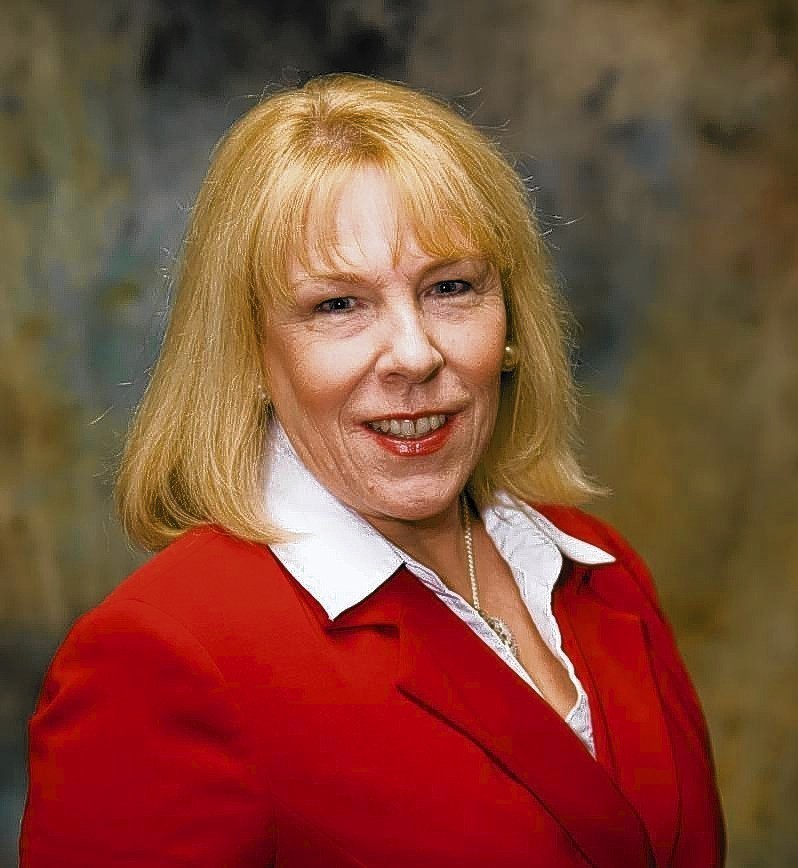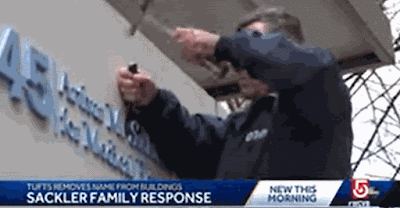After a while, a post I need to apologize for - coz it's a collection of ramblings like the old blog was full of..
Rudy Giuliani - after mayor gig, consultant - first client - Purdue - wanted to make a lot of money quickly. 2001 net worth $1m. five years later - $17m in income, $15m in assets.
Mountcastle (prosecutor) - the revolving door - inescapable familiarity between top lawyers at big law firms and the top appointees at justice. Have lunch with each other at fancy restaurants near White House to fraternize.
Therefore, to defeat cases brought by someone low in the hierarchy, Purdue could just kill the case by going over their heads directly to big shots at justice.
Sounds like the United States needs a new type of "motion to preserve evidence" - all conversations between these top officials and big law firms must be recorded.
Curtis Wright - FDA examiner - "came to understanding with Purdue" secret deal. Approved Oxycontin, then went to work for Purdue for $400k a year!
80 mg oxycontin = as much oxycodone as in 16 pills of percuset - hence target of addicts.
Purdue 1950's ad - fake biz cards of doctors - exposed by John Leer of Saturday Review - 1990's "I got my life back" videos. Methodone cheaper. Spanos - pain specialist.
Giuliani book "Leadership" - read by John Brownlee (prosecutor) before meeting Rudy.
Friedman, Goldenheim, H. Udell - fall guys - each getting about 3-5m. Same month that Sacklers paid Udell his $5m, they voted to pay themselves $325m
Prosecution memo - compilation of all incriminating evidence 100 pages - 2006 september.
Oct 2006 : Sacklers' defense team goes directly to office of asst. Attorney General. Wow!
Howard Shapiro, Mary Jo White -
Brownlee's team spends substantial portion of their careers into the case only for some white shoe influence peddlers go straight over their heads and short circuit. Purdue paid Shapiro's firm $50m+
What can you do with too much money?
The tiny British overseas territory of Turks and Caicos is an archipelago of coral islands that scattered like a handful of breadcrumbs across the opalescent waters between the Bahamas and the Dominican Republic. Most of the islands remain uninhabited and with clear water and beaches of powdery sand, Turks retains an aura of Robinson Crusoe seclusion that is a rarity among the more built-up corners of the Caribbean. As a consequence, it has become popular as a holiday refuge for the super rich. Moviestars such as Brad Pitt and athletes like David Beckham vacation in Turks. Until his death from an opioid overdose in 2016, the musician Prince had a private compound on the main island of Providenciales. During the high season between Xmas and New Years, the little airport at Providenciales is busy with sleek private jets taking off, and landing. In 2007, on a stretch of windswept coastline, a new resort was being built. It was called Amanyara and was part of a small chain of discreet super-luxury properties that originated in SE Asia. Guest houses at the resort would rent for as much as $10k/night and a series of sumptuous private residences were also available for sale at prices ranging from $11m to $20m. One investor, who bought a residence for himself and his family, was the oldest surviving son of Mortimer Sackler - Mortimer Jr. The younger Mortimer had grown up in Manhattan, one of two kids from his father's brief, tempestuous second marriage to the Austrian Geri Wimmer.
The Turks and Caicos refuge was finally ready for move-in at around the time that Purdue finalized its guilty plea - end of June. If that unfortunate episode had cause Mortimer any undue anxiety, Amanyara offered an excellent balm. He and Jocelyn had two sons by now. After a few short hours on a plane from NY, a Range Rover, stocked with scented moist towels to refresh them after their flight would pick the family up and ferry them to the resort - which was full of zen vistas and overgrown vegetation and abutted an expansive nature preserve. The name Amanyara is meant to evoke a place of peace and nirvana and the architecture was soothing consisting of Asian inspired pagoda-style pavilions. There was no loud music, no jet-skis, no cruise ships, none of the louche unsightly package tourists who had besmirched the more consumer-accessible parts of the Caribbean. Instead, Amanyara offered pure solitude and tranquility. The Sackler villa was really more of a compound, consisting of a series of buildings and a private swimming pool. The design was spare, but elegant, with hand-carved stone from Indonesia, silk from Thailand, and lots of teak. Each villa featured materials that had been shipped to T&C from 39 different countries. The Sacklers had their own personal chef, who was on call 24 hours a day, and a coterie of butlers and other attendants who hovered and swooped catering and scrubbing, like courtiers at Versailles. The ratio of staff to visitors at Amanyara was approximately 5 to 1. There were facilities dedicated to health and w with spa treatments and high-end yoga and Pilates instructors who were flown in from the US. Such amenities were helpful for Mortimer who, as he got older, developed back pain. Unlike the disgraced lawyer Howard Udell, who took Oxycontin, Mortimer did not avail himself of the family product. Instead, he relied on massage, acupuncture and other alternative remedies. According to a yoga instructor, who the family brought to Amanyara on a number of occasions, on one visit Mortimer's back pain was so severe that Jocelyn, who, when it came to staff, had a reputation as a fearsome taskmaster, ordered a couple of the butlers to accompany Mortimer as he huddled about, propping him up as human crutches.
IN 2008, a crime ring in LA recruited an elderly physician, named Eleanor Santiago, who was in poor health and struggling with debt, to set up a phony clinic near Macarthur Park named Lake Medical. Santiago began prescribing a great deal of oxycontin - one week in Sept she prescribed 1500 pills - more than many pharmacies might sell in a whole month. The next m the number jumped to 11k pills. A disproportionate number of Santiago's prescriptions were for 80 mg oxyc pills - the largest available dose - which, as it h, was also the most popular dose on the b market - where they were known as 80's and sold for $80 a piece. By the end of 2008, Santiago had prescribed 73k pills. A shady operation this might have been, but it was characterized by an industrial efficiency that was hard not to admire. Members of the crime ring would descend upon skid row in downtown LA and recruit homeless people, shuttling them off in vans and paying them $25 each to come to Lake Medical for a bogus examination. Next, they would escort these phony patients to a pharmacy, present the prescription that Dr. Santiago had just w and collect a bottle of oxyc 80's which the ring would then proceed to sell in bulk to drug traffickers who distributed them on the black-market, up and down the w coast and as far away as Chicago.
2007 - FDA approval for abuse-resistant oxycontin (OP). A scientific marvel - if you crushed, wouldn't fragment. They squashed like candy. Slam with hammer - crack, but not shatter. Couldn't snort - would get stuck in your nostril. Purdue never been shy about making bold claims. FDA eventually bestowed another gift - allowed package insert about abuse deterrent properties. Approved label with more marketing claims than due. Abuse resistance oxycontin was "a line extension". Patent for the original formulation had been set to expire in 2013.
Evergreening a patent to extend life
Often, companies will wait till a patent has nearly run its course and then introduce some minor tweak to the product, thereby obtaining a new patent, and effectively restarting the clock.
Purdue fought the case with its customary rigor - pushing to move the proceedings elsewhere, on the grounds that the company could not get a fair trial in Pike County, KY - the rural stretch of coal country, where the state intended to try the case. IN support of this motion, Purdue commissioned a demographic study of Pike Co and submitted it to the court as an illustration of potential bias in the jury pool. The report was revealing in ways Purdue might not have intended. According to the filing, 29% of the County's residents said they or their family members said they knew someone who had died from using oxycontin. 7 out of 10 described oxycontin's effect on their community as devastating. A judge ruled that Purdue could not shift the venue for the trial and it looked as though the co might actually be forced to fight this case in a Pick Co courtroom. The lawyers bringing the case wanted Richard S to sit for a deposition. This had never happened in any of the hundreds of cases that had been filed relating to oxycontin abuse even though R's family owned Purdue and he had been chairman of the board. Attorneys for the company fiercely resisted the idea that Richard might be forced to fly to a place like KY and answer questions under oath about oxycontin.
IN 2016, the LA Times released another big story - this one about the fact that oxycontin, which for 20 years had been marketed as a painkiller to be taken on a 12 hour dosing schedule, might not, in fact, actually work for 12 hours. Purdue had known about this problem even before the drug had been released, when patients in clinical trials complained that their pain was returning before the 12 hour mark - the paper revealed. But the company had sought to obfuscate the issue because the whole marketing premise for oxycontin had been that patients only had to take it twice a day. The article noted that, over the years since its release, more than 7m Americans have abused oxycontin. Next, The Times published a third investigative piece that was, if anything, more incendiary. Under the headline "Oxycontin Goes Global", it described how the Sacklers had shifted their attention to promoting opioid use in developing markets through Mundy Pharma. "It's right out of the playbook of big tobacco", the former commissioner of the FDA David Kessler told the newspaper. As the US takes steps to limit sales here, the company goes abroad. After the story was published, several members of congress wrote an open letter to the WHO urging it to help stop the spread of oxycontin and calling out the Sacklers by name. "The international health community has a rare opportunity to see the future" the lawmakers wrote. "Do not allow Purdue to walk away from the tragedy they have inflicted on countless American families simply to find new markets and new victims elsewhere." At Purdue, there had been a tendency over the ups and downs of selling oxyc over two decades to adopt a bunker mentality - during periodic spikes of negative publicity, senior management would send out company-wide emails - reassuring staff that they had been maligned once again, by a biased media narrative and unscrupulous reporters who always assumed the worst about Purdue overlooking all the good things that the company was doing. But the LA Times pieces occasioned some internal dissent, prompting what could have been an inflexion point for the company. Some employees were dismayed when they read the articles. They had known that Mundy Pharma was pushing opioids abroad, but not that it was using precisely the techniques that had gotten Purdue into trouble in the US.
Nan Goldin - grew up foster homes, hippy school in MA. At 19, her first show - little gallery in Cambridge. Her work - defiant rejection of the way in which her parents saw the world, or chose not to. Oxycontin, prescribed to you, by the Sacklers. Would come to play a major role in ejecting the Sacklers from public art and cultural institutions.
Tasmania - Westbury - fields of long stemmed poppies - around Tasmanian alkaloids facilities. Special variety of super-poppy - genetically engineered to produce a higher proportion of thebaine - an alkaloid that is the precursor for oxycodone. Poppies are harvested and processed into an extract that is flown to the US where the raw narcotic material can be processed into oxycodone and other products. This is the bread basket of the opioid boom. Tasmania 85% of all thebaine in the world. A subsidiary of JnJ developed this new strain of poppy. Johnson and Johnson started out as a family business like Purdue. People tend to associate the brand with Band-Aids and baby shampoo. But the company has also played a role in the opioid crisis. With the launch of oxycontin, JnJ's Tasmanian subsidiary, which owned the facility, ramped up production. In a 1998 agreement, it committed to supplying Purdue's entire worldwide requirements for the raw narcotic material to produce oxycontin. This turned out to be quite a commitment. As demand soared, the Tasmanian alkalloids facility had to encourage local farmers, who had previously grown other crops, like cauliflower and carrots, to switch to poppies. They did this in much the same manner as Purdue sought to stimulate its sales reps - by creating incentive programs and bestowing all expenses paid vacations and luxury cars. the economics of the poppy rush were such that a weather-beaten Tasmanian farmer might spend long workday tending the fields on the back of a tractor under the blazing sun and then climb into his souped up climate controlled for the drive home. At the height of the boom, in 2013, 74k acres in Tasmania were devoted to the crop. Poppies had become so profitable - one company accountant jokes that you could up the ante on the incentives and give them a 747 and if it got the farmers to grow more opium poppies, it would be worth it.
Historically, the DEA had regulated the amount of these substances that could be legally imported into the US. But the opioid epidemic put it under pressure from lobbying by the companies. The opioid boom is among other things, a parable about the awesome capability of private industry to subvert public institutions.
In making the case that they had only ever been bit players, the Sacklers and Purdue pointed a finger at their old adversaries - the generic makers. If you want to know where the great bulk of the prescription opioids come from, they suggested, that's where you should look. Oxycontin was introduced in a market dominated by generic opioids, a Purdue spokesman told the New Yorker in 2017. The vast majority of prescriptions for opioid pain medications is for generics, he said. But to some, who worked at Purdue, and who were familiar with the convoluted holdings of the Sackler clan, this talking point seemed egregiously insincere because the Sacklers secretly owned another pharmaceutical company in addition to Purdue, and it was one of the biggest manufacturers or generic opioids in the US. Rhodes Pharmaceuticals was located on a country road in the town of Coventry, RI and surrounded by formidable security. The company appeared to be intent on maintaining a low profile. For several years, the website was "under construction." The S family's history with Rhodes, which would eventually be uncovered by the Financial Times, dated back to the period following Purdue's guilty plea in the federal case in Virginia. Four months after the plea, the Sacklers established Rhodes. The company was set up as a landing pad for the family, according to a former senior manager of Purdue, in case they needed a fresh start following the crisis over oxycontin. Rhodes became the seventh largest opioid manufacturer in the US, just behind the generic giant Teva and well ahead of JnJ and Endo. Rhodes produced a generic version of MScontin and also an immediate-release version of oxycodone - a drug that was widely abused. An article on Purdue's website "Common myths about oxycontin" complained about the misperception that all oxycodone abuse involves oxycontin, suggesting that immediate-release oxycodone was also to blame, without acknowledging the awkward fact that the Sacklers happened to produce both drugs.
Goldin's most powerful weapon as an activist was her eye. Someone had alerted the NY Times and a photographer showed up at the Guggenheim and took position on the ground floor and pointed the camera at the up at the ceiling as the prescriptions floated down into the rotunda. The printed 8000 prescription slips to make sure they were enough. The headlines read “Guggenheim targeted by protestors for accepting money from family with oxycontin ties”. The following month, the Guggenheim announced that, after a two decade relationship, in which the Sacklers had donated 9 million dollars, the museum would no longer accept any future donations from the family. The same week, the National Portrait Gallery in London revealed that it had turned down a $1.3m gift from the Sacklers. Two days after the National Portrait Gallery, the Tate announced that it would not seek or accept further donations from the Sacklers. This was the domino effect Jonathan Sackler had worried about. The museums would not take the name down, as Goldin had demanded. “We do not intend to remove references to this historic philanthropy” the Tate said. The Guggenheim let it be known that there were contractual stipulations that meant that the Sackler Center for Arts Education must continue to carry that name. But this unprecedented move by cultural institutions to distance themselves from the Sacklers had clearly happened because of Goldin’s influence. In addition to framing each protest as it was a photograph, she boldly used her own leverage as a prominent figure in the art world.
Hito Steyerl : “I would like to address the elephant in the room.” Then denounced the Sacklers. Relationship between institutions and the toxic patrons was like being married to a serial killer. What was needed was as divorce. The Serpentine announced that, though it might be named after the Sacklers, it had no future plans to accept money from the family.
The litigation against the Sacklers had become so comprehensive, by this stage, that David and Jas were moving out of NY, a jurisdiction that was suing the family, to Palm Beach co, which was suing them too. It was a measure of just how intense the program had become that a New Jersey man, who happened also to be named David Sackler, initiated a lawsuit of his own against a number of media outlets that had used a photo of him, instead of the other David Sackler, in stories about the family. “Being taken for the wrong David Sackler has undermined his reputation,” the lawsuit contended, mentioning that this David Sackler had been reduced to adopting a pseudonym to get a table in a restaurant. Not to be left out, Purdue University in Lafayette, IN, issued a press release clarifying that it has never been associated, in any way, with Purdue Pharma.
Steve Colbert : Amendment of the Hippocratic Oath : First, do no harm, unless harming is incredibly profitable.
John Oliver : https://sacklergallery.com/
“They love having their name on effing galleries”
Tufts University
When Purdue pleaded guilty in 2007 to the misbranding, no one at Tufts had raised any particular concerns. When Sam Quinones published Dreamland in 2015, the medical school made a quiet decision to scuttle the book from its reading list for incoming students. In fact, it was only in 2017 after the near-simultaneous articles in the New Yorker and Esquire that questions arose about the propriety of the relationship between tufts and the family. Medical students began to express discomfort with attending lectures in buildings named after the Sacklers, or earning degrees from the Sackler school. Some of them started to organize, much as Nan Goldin had, starting a group called “Sack Sackler.” One first-year student, Nicholas Verdini made an impassioned entreaty to the university’s board of trustees in which he informed them that his own sister had been addicted to opioids and had died of a heroin overdose two years earlier. She was 25 and left behind two daughters. Mora Healy, in her complaint against the Sacklers, singled out Tufts as an example of the malign tentacles of the family’s influence. Richard had served on an advisory board at the school of medicine from 1999 until 2017. The family had offered what was described as a more targeted gift – to establish a new masters program in pain research education and policy and Richard enjoyed a warm relationship with the professor, Dr. Daniel Carr, who was appointed to run the program. “Our continued collaboration is top priority for me”, Carr told Richard in 2001. When the controversy surrounding oxycontin arose, Carr assured Richard that he should blame not himself, but the perpetrators that victimize us for their harmful misdeeds. In 2002, Carr appeared in a Purdue advertisement in the Boston Globe, dressed in a white coat, praising the company for doing something about the opioid crisis. The Pain program appointed a new adjunct professor – David Haddocks, and he touted his Tufts credential as a sign of his academic independence. In lectures to Tufts students, Haddocks used Purdue branded materials. According to the Tufts Daily, as late as 2010, one of the topics that he lectured on was pseudoaddiction. After the outcry from students, Tufts engaged a former federal prosecutor, Donald Stern, to conduct an internal review. When the review was complete in 2019, President Monaco and the chairman of the board sent an email to the Tufts community : “Our students, faculty, staff, alumni and others have shared with us the negative impact that the Sackler name has on them each day,” they wrote. The response that they announced was a radical one. The university would remove the name, stripping it from five facilities and programs. “Our students find it objectionable to walk into a building that says Sackler on it.” – Harris Berman, Dean.











.jpg/440px-Future_Affairs_Berlin_2019_-_%E2%80%9EDigital_Revolution_Resetting_Global_Power_Politics%3F%E2%80%9C_(47959578672).jpg)

No comments:
Post a Comment